New Home Server
Building a home server can be an exciting project for tech enthusiasts and professionals alike. Recently, I embarked on this journey and assembled a powerful setup tailored to my needs. Let me take you through the components that make up my new home server and how they come together to create a robust and efficient system.
The Core Components
1. WD RED NAS 6x 6TB SATA Drives
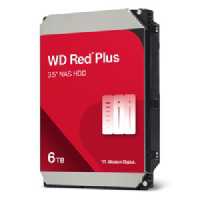
Storage is the backbone of any server, and for this build, I opted for the WD RED NAS drives. These drives are known for their reliability and are specifically designed for NAS (Network-Attached Storage) environments. With six 6TB drives, I have a total of 36TB of storage at my disposal. These drives are perfect for handling large amounts of data, including backups, media libraries, and virtual machines.
2. Fractal Design Define R5 Black Case
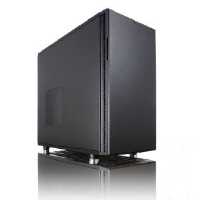
The Fractal Design Define R5 is an excellent choice for a server case. Its sleek, minimalist design is not only aesthetically pleasing but also functional. The Define R5 features ample space and excellent airflow, which is crucial for keeping components cool during extended operations. The case also includes noise-dampening materials, which helps keep the server quiet.
3. AMD Ryzen 7 5700G Processor
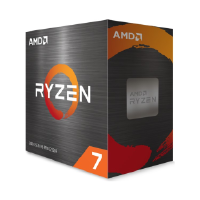
At the heart of my server is the AMD Ryzen 7 5700G processor. With 8 cores and 16 threads, this CPU offers impressive performance for multitasking and handling demanding applications. The 3.80-4.60GHz clock speed ensures that the server remains responsive and efficient, even under heavy loads.
4. Corsair Vengeance LPX 32GB DDR4-3200 Memory

To complement the powerful CPU, I installed 32GB of Corsair Vengeance LPX DDR4-3200 RAM. This memory kit, consisting of two 16GB modules, provides ample capacity and speed to handle multiple applications and virtual machines without breaking a sweat. The low-profile design of the Vengeance LPX also ensures that it fits comfortably in the case.
5. MSI MPG A650GF 650W Power Supply
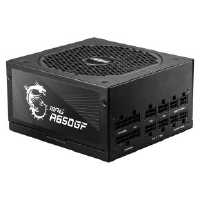
A reliable power supply is crucial for any server build, and the MSI MPG A650GF 650W power supply fits the bill perfectly. It offers ample power for all components, with a focus on efficiency and stability. The 80 PLUS Gold certification ensures that it operates efficiently, reducing power waste and keeping the server running smoothly.
6. ASUS ROG Strix B550-F Gaming WIFI II Motherboard

The ASUS ROG Strix B550-F Gaming WIFI II motherboard is the foundation of this build. It supports the AMD Ryzen 7 5700G processor and provides a robust set of features for connectivity and expansion. With built-in WiFi, high-quality audio, and multiple USB ports, this motherboard offers everything needed to build a high-performance server.
7. HBA LSI 9217-8i Host Bus Adapter
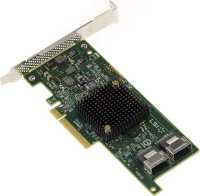
To manage the new drives effectively, I incorporated the HBA LSI 9217-8i Host Bus Adapter. This card is essential for connecting multiple drives to the server and supports a wide range of configurations. It enhances the server’s ability to handle the large amount of storage provided by the WD RED drives, ensuring reliable data access and transfer.
Putting It All Together
Assembling this server was a rewarding experience. The components fit together seamlessly, and the build process was straightforward thanks to the well-designed case and motherboard. With this setup, I now have a powerful and reliable server that meets all my needs, whether for data storage, media streaming, or virtualization.
Operating System: Proxmox VE
For the operating system, I’m using Proxmox Virtual Environment (VE). Proxmox is a powerful, open-source platform that combines virtualization and containerization. It allows me to run multiple virtual machines and containers efficiently, making it an ideal choice for managing diverse workloads. Proxmox’s web-based interface simplifies administration, while its robust features provide the flexibility needed for a home server environment.
Storage Configuration with ZFS
For data management, I configured two ZFS pools within Proxmox VE, leveraging the advanced features of ZFS for performance and redundancy.
1. ZFS Pool 1: RAID-Z1
The first ZFS pool is configured with four of the WD RED drives in a RAID-Z1 configuration. This setup provides a balance of redundancy and storage capacity. With RAID-Z1, one drive’s worth of data is protected against failure, and I have a total of 12TB of usable storage.
2. ZFS Pool 2: Mirror Mode
The second ZFS pool utilizes two drives in mirror mode. This configuration mirrors the data between the two drives, offering increased redundancy and performance. Although it provides less total storage compared to RAID-Z1, it ensures that data is duplicated for enhanced reliability.
Conclusion
Building a home server with high-quality components like the ones I’ve chosen ensures that you get a reliable and efficient system. The WD RED NAS drives offer ample storage and reliability, while the AMD Ryzen 7 5700G processor and Corsair Vengeance RAM provide the performance needed for demanding tasks. The Fractal Design Define R5 case, MSI MPG A650GF power supply, and ASUS ROG Strix B550-F motherboard tie everything together to create a balanced and capable server.
If you’re considering building your own home server, I hope this setup gives you some inspiration. Happy building!